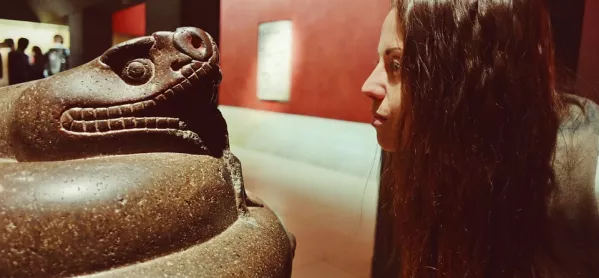Make the most of your field trip

The benefit of exposing children to the natural environment and their cultural heritage through field trips and educational visits is one of the few things that unites teachers, politicians and Ofsted.
A joint report by Kings College London and the National Foundation for Educational Research concluded that educational visits have positive impacts on long-term memory, help to develop students’ skills and knowledge and can lead to individual growth and improvements in social skills.
Despite this, many teachers have reservations about taking their students on a trip, whether it’s owing to the paperwork involved or the thought of having to guide 30 children around a museum without them breaking the exhibits.
So how can you overcome these potential barriers and pitfalls and make the most of your field trip?
Start planning potential field trips and visits as you plan schemes of work
Making sure the planned visit reinforces what you are teaching greatly boosts a students’ ability to retain the knowledge by allowing them to see concrete examples and make emotional connections with the material covered. If you know that your school will not allow visits until the summer term, adjust your curriculum accordingly.
Think about the cover requirements
One of the biggest barriers to taking trips is the additional cost of supply cover. Planning the trip as soon as timetables are available allows you to identify days which need the least cover. Negotiating with other teachers who are freed up to cover classes is often an effective way to persuade leaders that the trip is viable and cost neutral to the school. Once you have those agreements, get the dates for the visit in the diary early.
Speak to the educational visits coordinator (EVC)
Depending on your institution you may have an EVC in school or one based in the local authority of academy trust. They will have loads of examples of risk assessments for similar trips that will potentially save hours of time completing paperwork. They will also be able to advise on staffing ratios. Put simply, the EVC is your key ally in getting a trip to go ahead, so speak to them often.
I once had an LEA-based EVC refuse a trip to Morecambe because they had misunderstood the location. My risk assessment had covered the rapidly changing tides and quicksand, but the EVC was concerned about rock falls from cliffs. Morecambe has no cliffs, but I still had to ‘prove’ this to them. I would have saved lots of time had I simply talked them through the original risk assessment.
Go on at least one pre-visit
The pre-visit is absolutely crucial. Don’t let things just happen on the day: plan exactly where you will be dropped off and where you will conduct head counts and coordinate meeting points. The more you know before, the easier it will be on the day. Plan the exact activities the students will do. Think carefully about the lunch arrangements, and have a plan B. Having spent a lunch hour with 40 students sheltering from a hailstorm in a bandstand, I made sure that a local social club was available for the following year.
Use the local experts
Most large museums and institutions have education departments and resources available to lend an expert point of view to your visit. Even smaller institutions have curators that are happy to talk to school parties. However, they don’t know exactly what you have been covering in the classroom unless you tell them. Build a partnership with the institutions and experts so that they can personalise the talks for your students.
Once, on a visit to a military museum, a group of students I was with sat through a talk that was almost identical to one they had in school. They had simply swapped one classroom for another. The next time, museum staff lined the students in formation with weapons and really brought the topic to life, allowing the students to have an unforgettable experience whilst still delivering the key knowledge.
Manage the group
If the trip has been well-planned in advance, it will run smoothly. Don’t be tempted to change your plans on the day if you have not properly assessed the associated risks and how to manage it. You don’t want to be the teacher who deems it safe to walk along the coast only to need rescuing by coastguards when the tide changes.
However, there are some simple things that can be done to create a purposeful atmosphere on the day. If you are travelling by coach, have the teachers sit at the back where they can see the entire cohort. Don’t over-structure the day so that students don’t have the opportunity to discover things for themselves, and be inspired by what they learn and see.
I will never forget the student who discovered that not all squirrels are grey. This led to conversations about invasive species and inspired him to do his own research project on this topic. The opportunity for students to discover, learn and be inspired by what they see is, after all, the reason for bringing them in the first place.
Take the trip back to school
If the trip is fully integrated into the curriculum, the lessons learned from the day can be easily followed up in class. Make sure any data collected is used, and encourage students to actively make links to previous learning. Make sure you have pictures and video from the day to make displays that students can refer back to and to publicise the success of the trip. Get students to share their experiences in assemblies.
Evaluate the visit honestly
If all has gone well, you will be looking forward to going again the following year. Do, however, take the opportunity to ask students, teachers and partnered organisations for their opinions. It can be easy to overlook things on the day when you are leading the trip, and simple tweaks could make similar trips even better in the future.
Discover amazing outdoor educational experiences across the UK here.
Nic Ford is deputy head (academic) of Bolton School Boys’ Division
